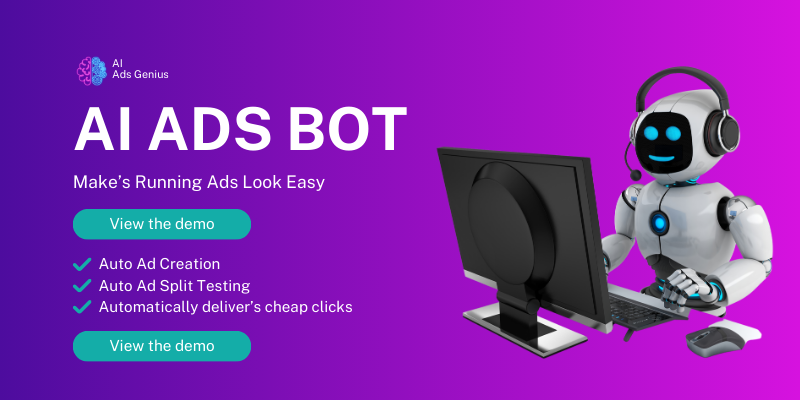Understanding Your Audience
Identifying Past Customers
Alright, let’s kick things off by understanding your audience. This is the first step in executing effective retargeting ads. You’ve got to know who your past customers are, right? It’s essential to segment them out of your general audience to avoid throwing good money after bad by targeting people who have already bought what you’re selling.
Using Facebook’s tool, you can create a custom audience based on previous purchasers. Just head to your Facebook Ads Manager, navigate to the “Audiences” section, and here you’ll find the option to create a custom audience based on your customer list. It’s super user-friendly—you just upload your email list, and you’re good to go!
This isn’t just marketing mumbo jumbo; it’s about cultivating a more relevant ad experience which, frankly, people appreciate. You’ll see a significant uptick in engagement because your ads will be served to fresh eyes, instead of people who’ve already made a purchase.
Creating Custom Audiences
Utilizing the Custom Audience Feature
Now let’s get into creating those custom audiences! Facebook allows you to create different categories for your audiences based on various metrics. For excluding previous customers, consider using the “Customer File” option. You can upload a list of people who have previously purchased from you. It’s a game-changer!
Make sure that your data is clean and formatted correctly to prevent any issues during the upload process. I remember when I first started and had a mess of spreadsheets—it took me ages to sort through everything. Learning to manage that data properly will save you so much time and hassle.
This is essentially laying the groundwork. The more precise your audience segmentation, the better your ads will resonate with those who haven’t purchased yet. Believe me, I’ve seen campaigns that bombed simply because they failed to exclude people who were “in the know.”
Setting Up Your Retargeting Campaign
Choosing the Right Ad Format
Once you have your custom audiences, it’s time to set up that retargeting campaign. Choosing the right ad format can really make a difference. Personally, I find carousel ads work wonders for eCommerce. They showcase multiple products and can really grab attention!
Dynamic ads are another killer option. They automatically show the right products to the right people based on their browsing behavior on your site. If someone checked out a pair of shoes but didn’t buy, dynamic ads will remind them of just that—super effective.
Make your visuals pop! Your audience scrolling through their feed has a million things vying for their attention. You’ve got to stand out, so make sure your ad creatives are eye-catching and professional. Invest a little time in Canva or hire a designer if it fits your budget—it’ll pay off!
Adjusting Ad Spend and Strategy
Fine-Tuning Ad Budgets
Alright, let’s talk numbers for a second. After getting your groovy audience and creative set up, it’s time to discuss how much you want to spend on these ads. Initially, it’s wise to start with a smaller budget. Test the waters before you unleash a flood of cash.
After running the ads for a while, check back regularly to see how they’re performing. You may want to adjust your spending based on which audiences and creatives are really working. If you see a certain ad resonates well, pump a little more money into that one to maximize its potential.
Also, keep an eye on the frequency of your ads. If people are seeing the same ad over and over, it can lead to fatigue, and you don’t want to be that annoying gnat buzzing around everyone’s head!
Analyzing Results and Adjusting Tactics
Outcome Assessment
Last but definitely not least, let’s dive into what happens after you’ve launched those ads—analyzing results. Seriously, if you don’t know how to look at your data and draw insights from it, you’re missing out on some prime learning opportunities.
Facebook’s Ads Manager provides a wealth of data that can be overwhelming, but take it one step at a time. Start with the basics like click-through rates and conversion rates. This will give you a rough idea of how well your campaigns are doing. Once you get comfortable, you can dig deeper into what’s working and what’s not.
And don’t be afraid to tweak your strategy! The digital marketing landscape is always changing, and flexibility is key. What works today may not work tomorrow, and that’s okay. Always think of new ways to approach your audiences and keep experimenting.
Frequently Asked Questions
1. Why should I exclude people who purchased from my retargeting campaigns?
Excluding past purchasers is crucial as it prevents wasting ad spend on individuals who have already converted, allowing you to focus your efforts on fresh potential customers.
2. How do I create a custom audience of my past customers?
You can create a custom audience by uploading your customer list in Facebook Ads Manager under the “Audiences” section, where you select the option to create an audience from a customer file.
3. What ad formats are best for retargeting campaigns?
Carousel ads and dynamic ads are often the most effective formats. They allow for multiple product showcases and personalized messaging based on user behavior.
4. How can I fine-tune my ad budget effectively?
Start with a smaller budget to test performance, adjust based on engagement metrics, and avoid ad fatigue by monitoring frequency and making changes as needed.
5. What should I focus on when analyzing ad performance data?
Begin with basic metrics like click-through rates and conversion rates, then dive deeper into audience insights and adjust your campaign strategy based on what you learn.

